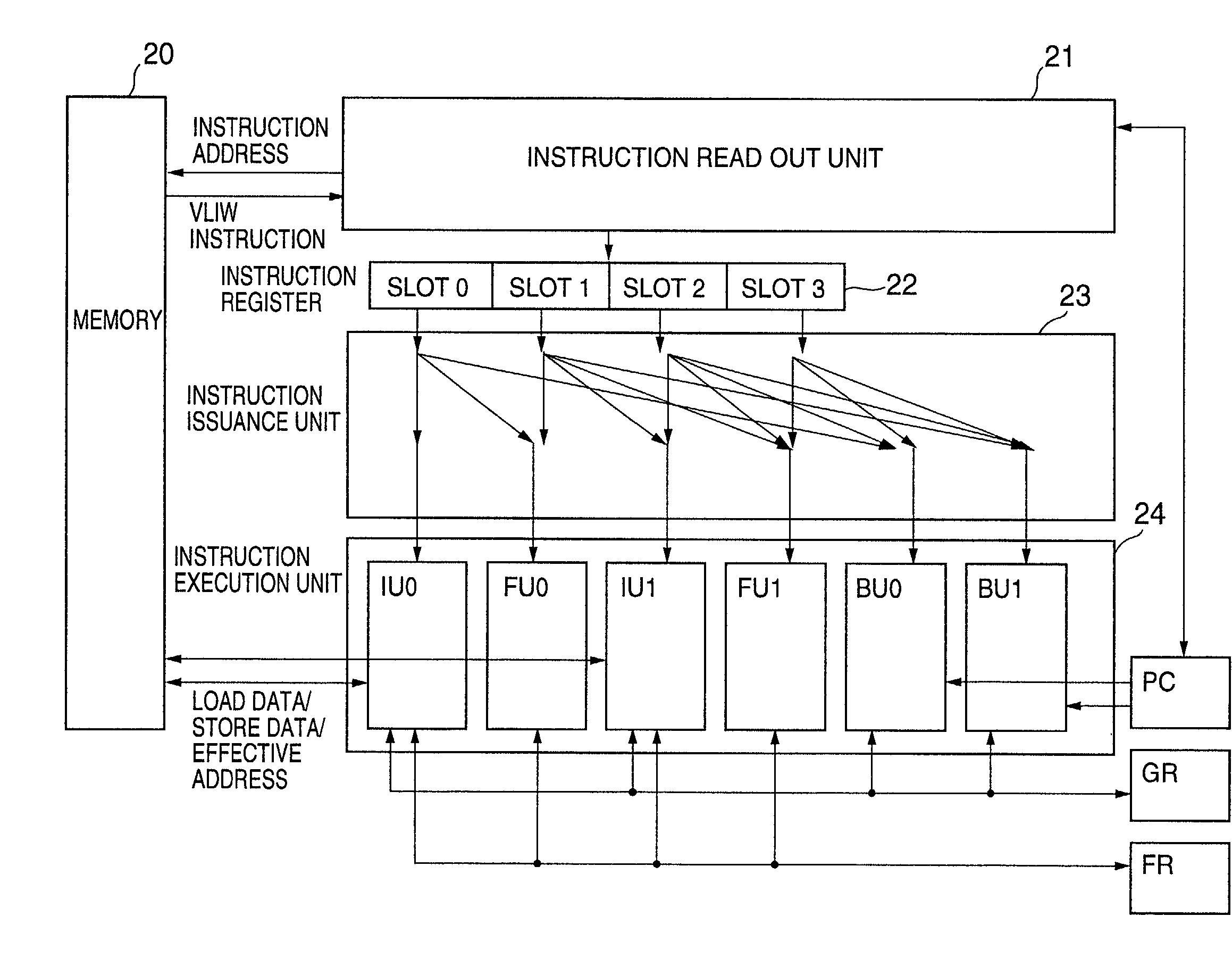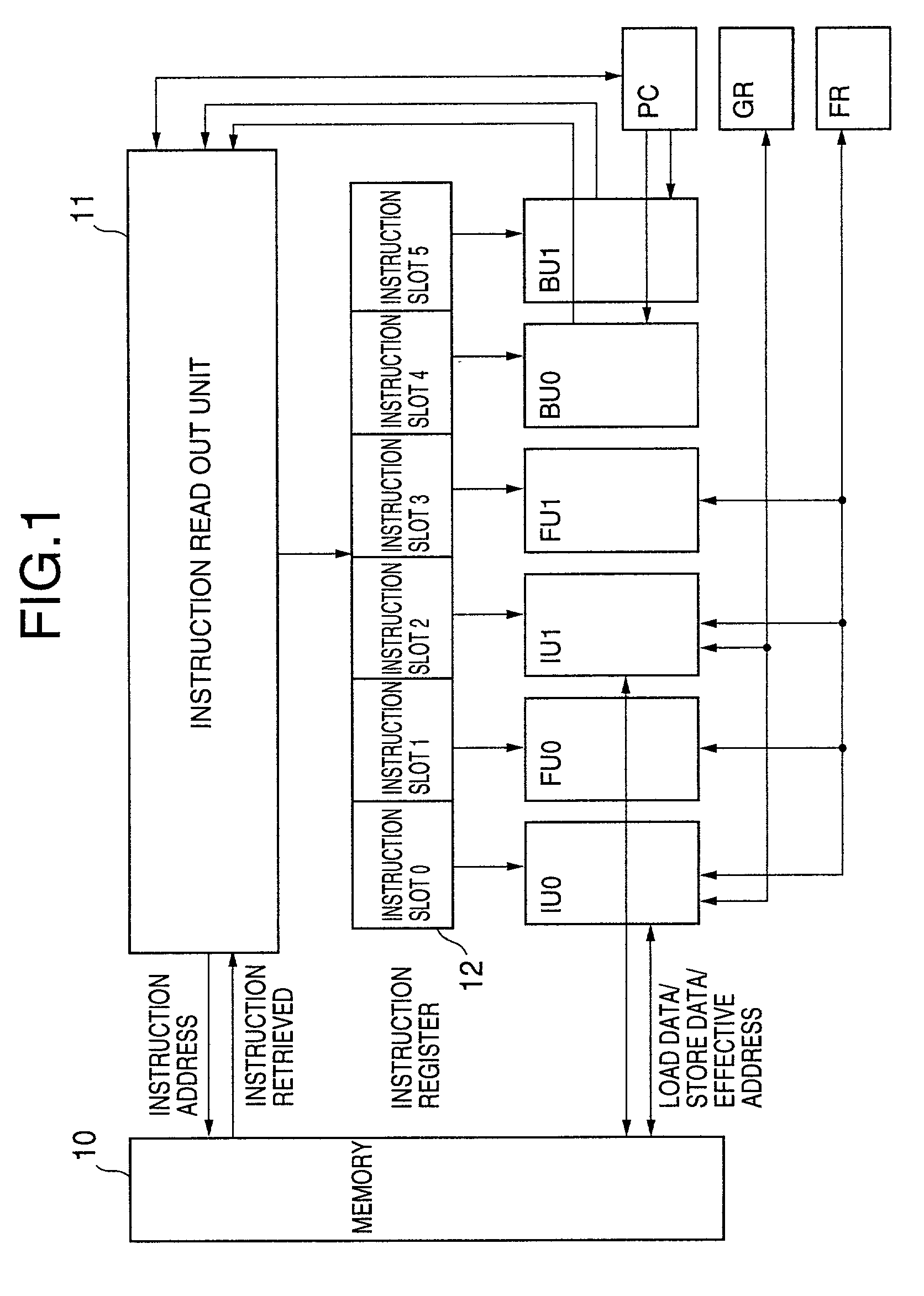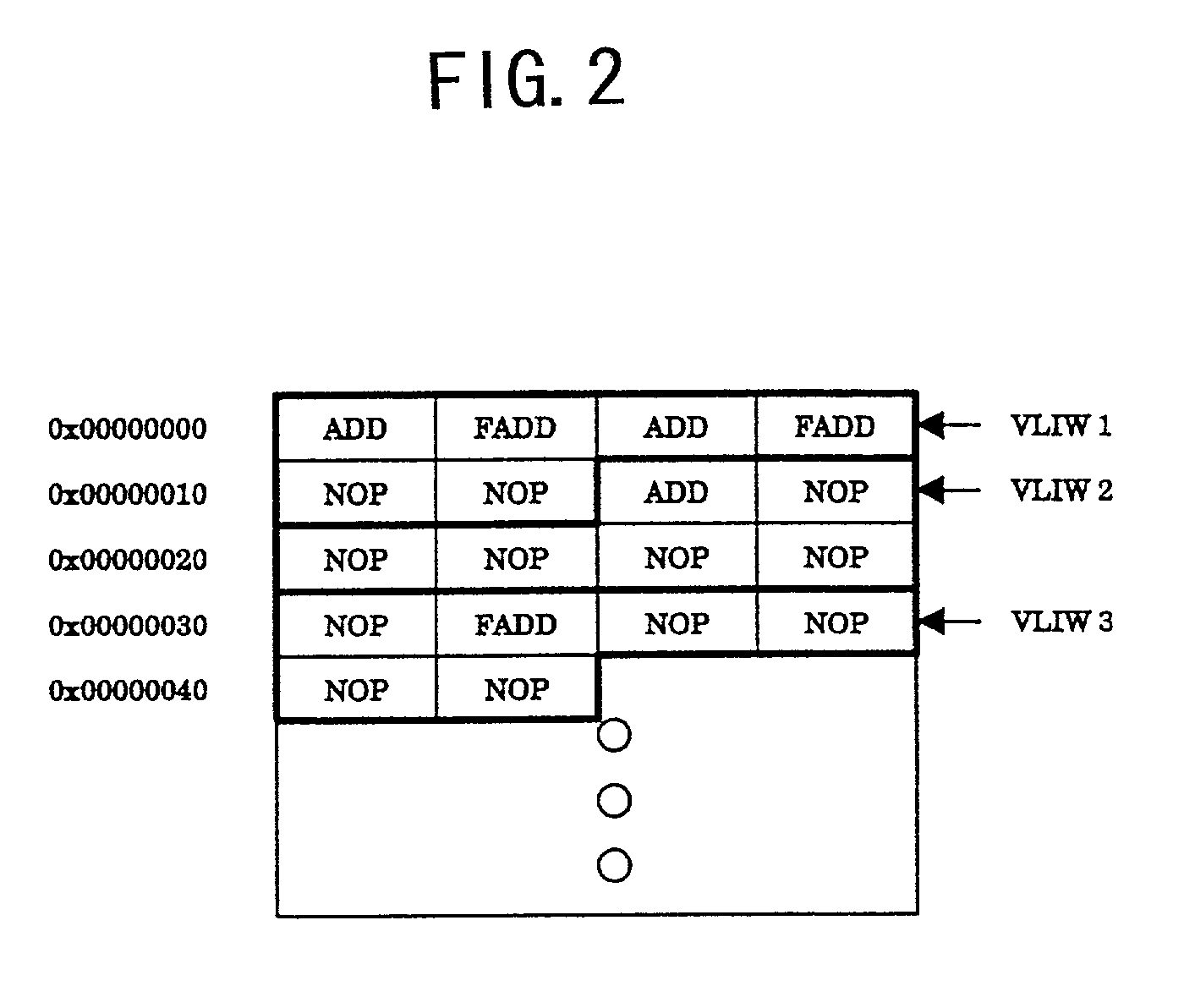Instruction processing method for verifying basic instruction arrangement in VLIW instruction for variable length VLIW processor
- Summary
- Abstract
- Description
- Claims
- Application Information
AI Technical Summary
Problems solved by technology
Method used
Image
Examples
first embodiment
[0111] FIG. 10 is a block diagram of a variable length VLIW processor which can execute at most 4 instructions at a time. This processor includes a memory 20, an instruction readout unit 21, an instruction register 22, an instruction issuance unit 23, and an instruction execution unit 24. The instruction execution unit 24 includes integer units IU0 and IU1, floating point units FU0 and FU1, and branch units BU0 and BU1. This processor further includes a general purpose register GR, a floating point register FR, and a program counter PC.
[0112] It is assumed in this description that 22 sets of basic instructions listed in FIG. 11 are allowed as an arrangement of a VLIW instruction. Symbols used in FIG. 11 have the following meanings. I0 means that an executable basic instruction is provided to IU0. I1 means that an executable basic instruction is provided to IU1. F0 means an executable basic instruction is provided to FU0. F1 means that an executable basic instruction is provided to F...
second embodiment
[0197] FIG. 31 shows a variable length VLIW processor which can execute at most 8 instructions at the same time. It will be assumed in the following description that basic instruction arrangements are checked by applying the first basic instruction arrangement verification algorithm previously described in relation to an assembler.
[0198] The variable length VLIW processor shown in FIG. 31 includes a memory 120, an instruction readout unit 121, an instruction register 122, an instruction issuance unit 123, an instruction execution unit 124, a general purpose register GR, a floating register FR, and a program counter PC. The instruction execution unit 124 includes integer units IU0, IU1, IU2, and IU3, and floating units FU0, FU1, FU2, and FU3, and branch units BU0, BU1, BU2, and BU3.
[0199] As shown in FIG. 32 and FIG. 33, it is assumed that 73 basic instruction arrangements in a VLIW instruction are executable with this processor.
[0200] The instruction readout unit 121 retrieves from ...
third embodiment
[0214] In the third embodiment, a basic instruction arrangement in a VLIW instruction is verified by applying the second basic instruction arrangement verification algorithm to the variable length VLIW processor which can execute at most 4 basic instructions at the same time.
[0215] A processor is assumed to have the same structure as that of the first embodiment. The second basic instruction arrangement verification algorithm shown in FIG. 28 is used as the algorithm of the basic instruction verification unit 13A-1.
[0216] FIG. 38 is an instruction classification table used for the third embodiment. FIG. 39 is an instruction category table for the third embodiment. FIG. 40 is an instruction slot table for the third embodiment.
[0217]
PUM
 Login to View More
Login to View More Abstract
Description
Claims
Application Information
 Login to View More
Login to View More - R&D
- Intellectual Property
- Life Sciences
- Materials
- Tech Scout
- Unparalleled Data Quality
- Higher Quality Content
- 60% Fewer Hallucinations
Browse by: Latest US Patents, China's latest patents, Technical Efficacy Thesaurus, Application Domain, Technology Topic, Popular Technical Reports.
© 2025 PatSnap. All rights reserved.Legal|Privacy policy|Modern Slavery Act Transparency Statement|Sitemap|About US| Contact US: help@patsnap.com



